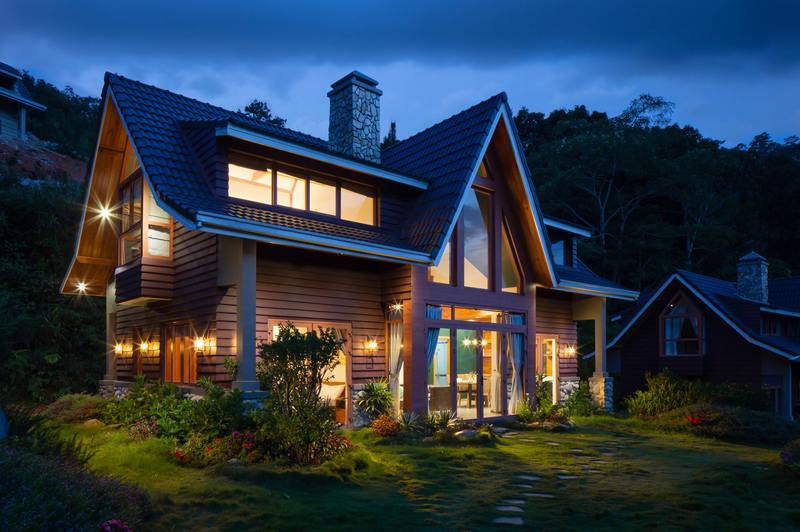One of the best ways on how to prevent mildew on outside of house is to clean it regularly. Remove the organic debris and keep your patio items dust-free.
Other than cleaning, you will find more mildew prevention tips below. Hence, be sure to read until the end of this article!

Outdoor Mildew Growth
Outdoor mildew growth is not uncommon. They are more likely to grow outside than inside your homes as the humidity levels are unlikely to be maintained.
As per usual, mildew needs four conditions to grow. The last two criteria to develop are typically moisture and food source.
The mildew’s food source outdoors is usually plants or wooden furniture since they are made of organic materials. However, since mildew spreads rapidly, it quickly affects the objects near them.
Here is an example of an article on how to prevent mildew on outdoor cushions to show you that non-organic materials get affected too.
Another reason for mold growth is moisture, which is challenging to control outdoors. When there is excessive moisture on your plants along with debris, mildew will grow on them.
From there, mildew spores may spread to other parts of your patio.
Where Does Mildew Grow Outside Of the House?
As mentioned above, mildew frequents organic materials, specifically plants. There are even preventive measures to keep powdery or downy mildew away from crops.
That’s how damaging mildew is to plants. Moreover, like mold, mildew rapidly spreads from one surface to another.
They can affect outdoor cushions and outdoor carpets. Here is an article outlining how to clean outdoor rug with mildew before they get worse.
Mildew may not be as destructive on its own, but when it invites mold to grow on a surface, the situation becomes more serious.
Apart from plants and rugs, mildew can also grow on the patio. Any form of organic matter, whether tree leaves, grass, or branches, is a food source of the mildew.
The outside of your house is laden with such organic matter, making it challenging to keep it mildew-free.
What Are The Dangers Of Outdoor Mildew Growth?
There is a reason why homeowners should not take mildew growth lightly. One reason for it to be taken seriously is that mildew can still trigger allergic reactions in some people.
Those who have pre-existing conditions like asthma are particularly vulnerable to mildew. You would know that you’ve been exposed to mildew if you experience sore throat, headache, and minor respiratory issues.
These symptoms may worsen as your exposure to mildew gets prolonged. Moreover, mildew attracts mold growth.
Some people interchange mildew and mold because of this. They think that mildew is the early stage of mold; however, it’s more that mildew attracts mold growth and gets taken over.
When mildew attracts mold, the health effects become more serious. The surfaces it invades also become more damaged as it penetrates and breaks down where it is growing.
How Can You Prevent Outdoor Mildew Growth?
If mildew is that dangerous, how can one prevent it from growing? Here are the ways:
Keep everything clean
Mildew thrives in spaces where there is organic debris. Hence, a way to prevent them from growing outdoors is to keep the area free from fallen leaves and branches.
Moreover, regularly check your outdoor items on whether they have accumulated dust as it may serve as an invitation for mildew. Do regular inspections on your plants since they are the most vulnerable to mildew.
Get rid of damp items
As you know, moisture easily attracts mildew. It only takes a day for mildew to grow on a damp surface.
If your outdoor cushions or rugs got rained on, you better attend to them as soon as possible. Remove their covers and wash them, then dry the pillow itself.
You can use a hairdryer if the weather is not amenable to air drying.
Use moisture-absorbing items
Since you cannot control the temperature outdoors, it is more challenging to keep it mildew-free. Dehumidifiers are not that useful outside of the house.
Moreover, the airflow outdoors isn’t as constricted as indoors, so there’s no need for fans and air conditioners. What then can you do to control moisture?
Well, a way to prevent your patio items from acquiring mildew is to use moisture-absorbing items. You can use silica gel, which is the go-to desiccant to combat high moisture levels.
Other moisture-absorbing items include anhydrous calcium sulfate and activated alumina. These objects are safe to use for fabrics, so you don’t need to worry about their effects.
You cannot use these on plants, though. The only way to keep your plants mildew-free is to rid them of organic debris.
Attend to problems immediately
Lastly, when you notice signs of mildew growth, like the musty odor, attend to it immediately. As mentioned in this article several times, mildew rapidly spreads.
Moreover, it can lead to mold growth. So, to prevent more extensive contamination, be sure to remove the mildew immediately.
Conclusion
We hope this article about how to prevent mildew on outside of house was helpful to you, especially since we outlined the dangers of mildew growth. We hope that encourages you to attend to your fungi-related problems immediately or as soon as they occur before they get worse.
